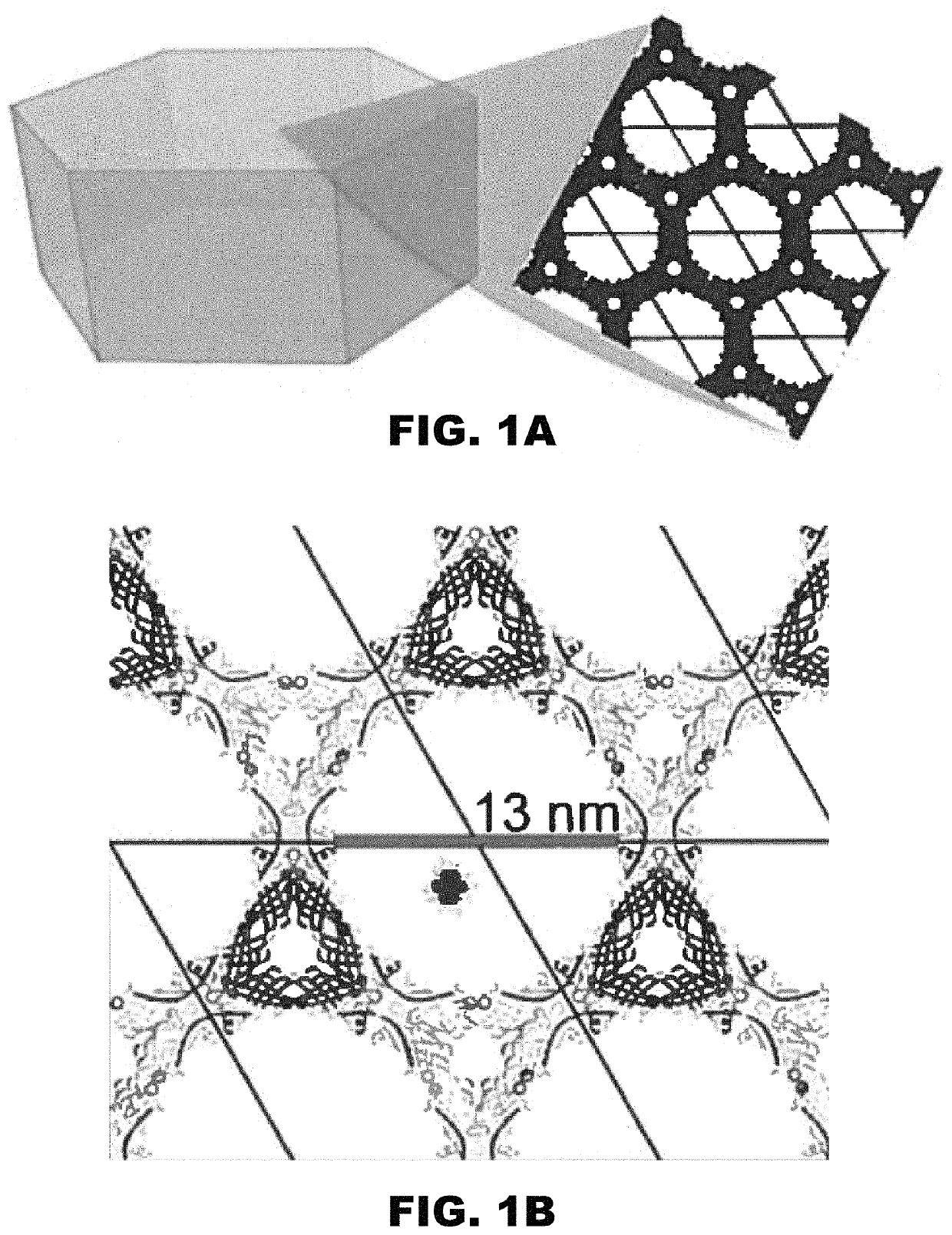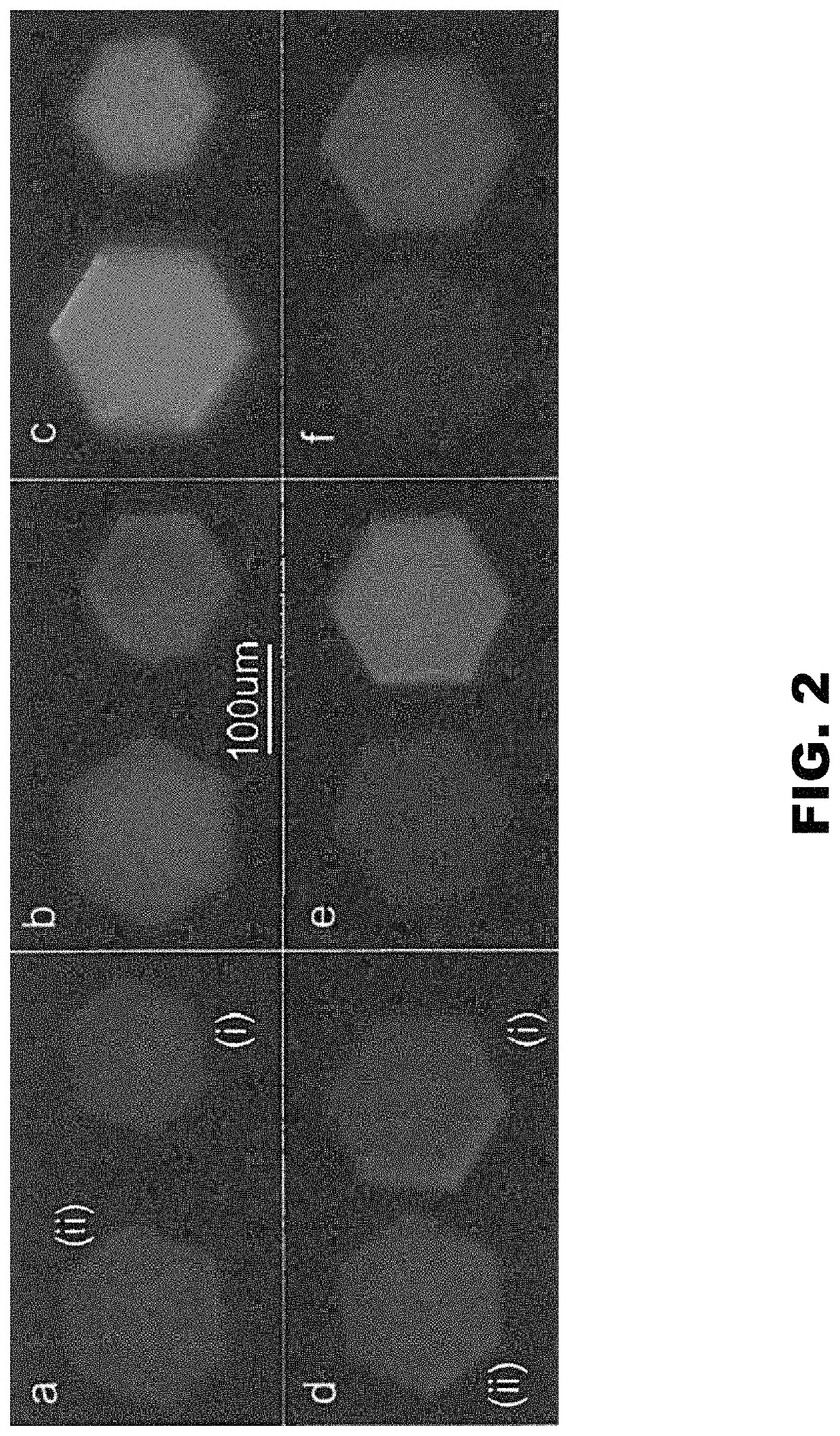Engineered programmable molecular scaffolds from porous protein crystals
a technology of porous protein and molecular scaffold, which is applied in the direction of transferases, peptide sources, instruments, etc., can solve the problems of exceedingly difficult control of the difficulty of controlling the placement of biological or synthetic molecules in the solvent channel or void within the protein crystal
- Summary
- Abstract
- Description
- Claims
- Application Information
AI Technical Summary
Benefits of technology
Problems solved by technology
Method used
Image
Examples
example 1
particle Capture with Protein Crystal Scaffolds
Introduction
[0160]DNA assemblies have been used to organize inorganic nanoparticles into 3D arrays, with emergent properties arising as a result of nanoparticle spacing and geometry. Described herein is the use of engineered protein crystals as an approach to biologically mediated assembly of inorganic nanoparticles. The protein crystal's 13 nm diameter pores result in an 80% solvent content and display hexahistidine sequences on their interior. The hexahistidine sequence captures Au25(glutathione)˜17 (nitrilotriacetic acid)˜1 nanoclusters throughout a chemically crosslinked crystal via the coordination of Ni(II) to both the cluster and the protein. Nanoparticle loading was validated by confocal microscopy and elemental analysis. The nanoparticles may be released from the crystal by exposure to EDTA, which chelates the Ni(II) and breaks the specific protein / nanoparticle interaction. The integrity of the protein crystals after crosslinki...
example 2
g Guest Molecules at Specific Sites within Host Protein Crystals
[0229]It has been previously reported that the structure of small molecules can be resolved when they are soaked into metal organic frameworks (MOFs). However, this method presented many challenges. Challenges associated with the crystalline sponge method include guest size limitations, the need to reach high occupancy, and the reliance on adventitious non-covalent interactions to drive the guest molecules to adopt a coherent structure. It was hypothesized that site-specific covalent installation would reduce the conformational freedom of guest molecules, facilitating host-guest crystallography. To systematically test this hypothesis, four different conjugation strategies were used to attach guest molecules to three different cysteine sites within an engineered protein crystal. In all but one case, the presence of the adduct was obvious in the electron density. Post-crystallization installation and structure determinati...
example 3
ing
Introduction
[0279]The disclosure herein compares the crosslinking chemistry of GA, formaldehyde, glyoxal, and 1-ethyl-3-(3-dimethylaminopropyl) carbodiimide hydrochloride (EDC) for their ability to effectively stabilize crystals composed of CJ, a putative periplasmic protein from Campylobacter jejuni (cj0420). Alongside these reagents, urea and guanidinium were also tested as additive compounds to facilitate the creation of additional or alternative intermolecular connections. Crosslinking agent performance as a function of time was also quantified.
Methods
[0280]Crystal Growth:
[0281]Target crystals were composed of CJ1 (Campylobacter jejuni YCEI protein, PDB structure: 2FGS) wild type. Sitting drop vapor diffusion was used to crystalize this protein. The reservoir solution contained 3.1 to 3.5M Ammonium Sulfate buffered at pH 6.0 with Bis-Tris (2-[Bis(2-hydroxyethyl)amino]-2-(hydroxymethyl)propane-1,3-diol). Protein samples were concentrated to approximately 8-15 mg / ml. Crystals o...
PUM
| Property | Measurement | Unit |
|---|---|---|
| diameter | aaaaa | aaaaa |
| pore diameter | aaaaa | aaaaa |
| molecular weight | aaaaa | aaaaa |
Abstract
Description
Claims
Application Information
 Login to View More
Login to View More - R&D
- Intellectual Property
- Life Sciences
- Materials
- Tech Scout
- Unparalleled Data Quality
- Higher Quality Content
- 60% Fewer Hallucinations
Browse by: Latest US Patents, China's latest patents, Technical Efficacy Thesaurus, Application Domain, Technology Topic, Popular Technical Reports.
© 2025 PatSnap. All rights reserved.Legal|Privacy policy|Modern Slavery Act Transparency Statement|Sitemap|About US| Contact US: help@patsnap.com



